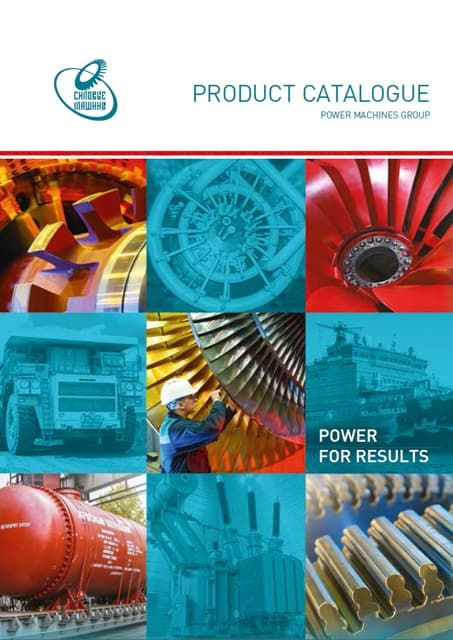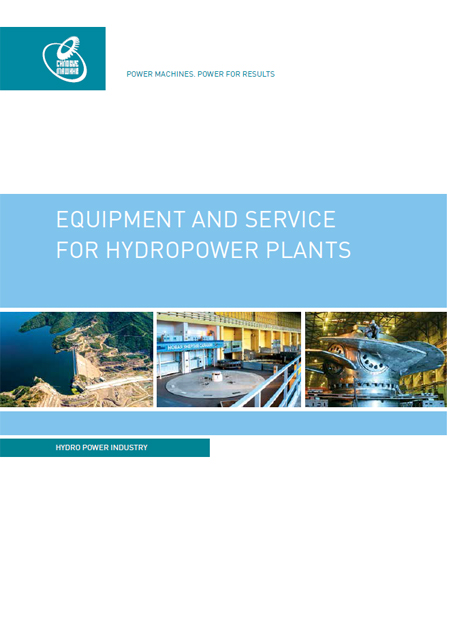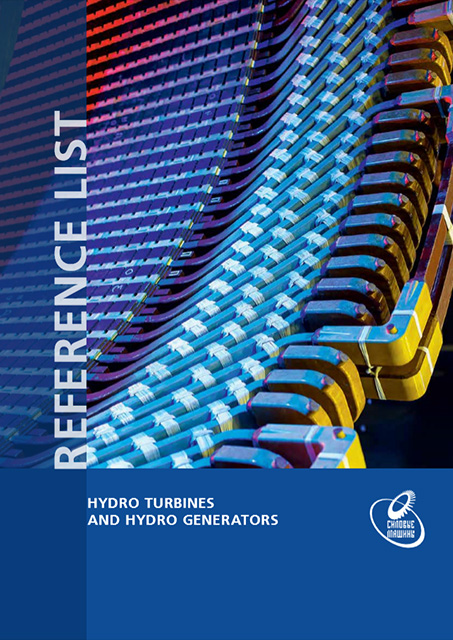Hydroturbines
The production of hydraulic turbines at Power Machines is concentrated at Leningradsky Metallichesky Zavod (LMZ) (Leningrad Metal Plant), which has almost a century of hydroturbine production experience. The first Russian hydraulic turbine was made at LMZ in 1924.
Hydroturbines, automated control systems and gate valves are designed in the Special Design Bureau of JSC "Power Machines", Gidroturbomash, established over 80 years ago. Hydraulic turbine equipment is designed using the in-house R&D advancements of the Gidroturbomash design bureau.
Turbine types and scopes of application:
- Francis turbines with a maximum capacity of 1000 MW, a maximum head of 600 m and a runner diameter of 1 to 8.3 m;
- Kaplan turbines with a maximum capacity of 300 MW, a maximum head of 70 m and a runner diameter of 1 to 10.3 m;
- Bulb turbines with a maximum capacity of 70 MW, a maximum head of 25 m and a runner diameter of 4.0 to 7.5 m;
- Pelton turbines with a maximum capacity of 180 MW, a maximum head of 700 m and a runner diameter of 0.7 to 3.5 m;
- Pump turbines with a maximum capacity of 300 MW, a maximum head of 400 m and a runner diameter of 3 to 8 m, including turbines with variable pump and turbine mode speed.
Thanks to its extensive experience in solving complex design tasks, as well as in the development and manufacture of various hydraulic turbine equipment, Power Machines is capable of designing custom solutions for each individual project.
At each operational stage, all applicable production procedures are strictly observed. All these measures, coupled with our individual approach to each project, ensure:
- reliable operation throughout design life of at least 40 years;
- operating power range expansion;
- environmental safety of equipment;
- reliable equipment operation;
- reduced operating costs.
To gain a more accurate evaluation of the energy efficiency, cavitation, and mechanical-strength properties of hydraulic turbine equipment, Power Machines experts carry out all the necessary research and development utilizing the physical and mathematical modeling of turbine processes, including 3D analysis (CFD) of the fluid flow in the turbine’s head race components, runner and intake aspiration tunnel.
This research makes it possible to calculate optimal equipment parameters and, eventually, enhance the economic performance of a hydroelectric power plant by:
- reducing hydraulic losses on the runner;
- reducing hydraulic losses in the intake aspiration tunnel by forming an optimal flow for aspiration tunnel operation;
- enhancing the cavitation performance of the hydraulic turbine in order to increase maximum power capacity without changing turbine depth;
- reducing the non-stationary effect of the flow by optimizing the runner and installing stabilizing devices.
In order to prove design solutions, the most critical components are modeled and tested at specially-built test benches. Such testing allows for the evaluation of factors affecting efficiency, strength, cavitation damage and vibration.
Acceptance testing is carried out in the water turbine laboratory and witnessed by the customer in accordance with the applicable international IEC standards.
The reliability and efficiency of design solutions is proven by full-scale testing using operating hydraulic turbine equipment, by experienced specialists at the water turbine laboratory.
- hydrogenerators;
- pre-turbine gate valves;
- hydraulic part of governors and oil pressure units;
- automated control systems of hydraulic turbines;
- excitation systems and start-up frequency converters.
Power Machines offers the servicing, modernization and overhaul of HPP equipment, aimed at improved reliability, cost-effectiveness, control response and ease of operation.
By implementing power-plant overhaul and modernization projects, Power Machines meets strategic challenges ensuring return on customers’ investment by restoring the operating capacity of equipment and enhancing its technical and economic performance and reliability.
Equipment modernization and repair can be carried out at the manufacturer’s shop or power plant site.
Overhaul is planned and carried out in such a way as to minimize construction works and use existing embedded structures and foundations for modernized equipment installation as much as possible.
Catalogues








